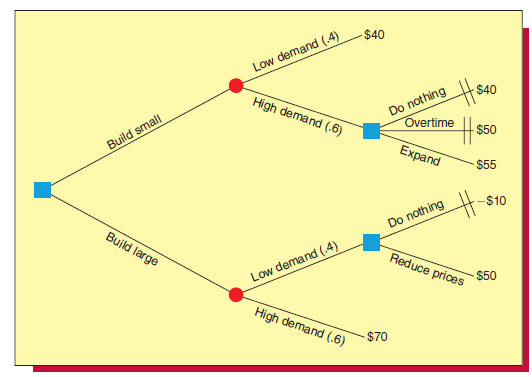Consider the decision tree in Figure 18.9 and the situation described in Exercise 18.34. Suppose that a
Question:

Figure 18.9

For instance, P(favorable | high) = .9 and P(unfavorable | low) = .8. Given the prior probabilities and payoffs in Figure 18.9, do the following:
a. Carry out a posterior analysis. Find the best alternative (build small or build large) for each possible study result (favorable or unfavorable), and find the associated expected payoffs.
b. Carry out a preposterior analysis. Determine the maximum amount that should be paid for the marketing research study.
Fantastic news! We've Found the answer you've been seeking!
Step by Step Answer:
Related Book For 

Business Statistics In Practice Using Data Modeling And Analytics
ISBN: 9781259549465
8th Edition
Authors: Bruce L Bowerman, Richard T O'Connell, Emilly S. Murphree
Question Posted:





